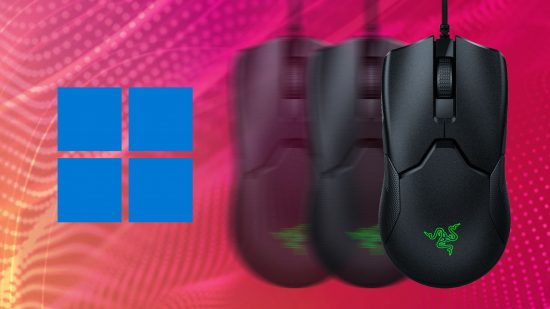Contrary to popular belief, Microsoft does work tirelessly to improve all manner of aspects of its Windows operating system, and the recent July 2023 Windows 11 update shows just what a difference these efforts can make. As well as introducing the option to add seconds to the taskbar clock (we know – this is big deal stuff!), this update includes a fix that could be making a huge difference to many gamers’ experience. The Windows 11 update July 2023 reduces game stutter.
The details of this issue and the fix for it is something Microsoft explained all the way back in May 2023 but wider awareness has only recently spread.
The crux of the issue is that Windows can only receive so many input instructions before its whole input stack gets bogged down. That’s why we’ve seen users reporting issues with modern mice that have very high polling rates (the frequency with which a mouse reports its movement) for many years. Not so long ago a typical gaming mouse only had a polling rate of 250Hz but these days 1,000Hz is standard while the likes of the Razer Viper 8K can push to 8,000Hz.
Crucially, this high polling rate wasn’t just being used by the games that needed it, but also being used by other background processes, clogging up the input stack. However, by ‘throttling and coalescing background raw mouse listeners and capping their message rate’ Microsoft has greatly reduced the strain on the whole input stack, freeing up CPU resources to render games in a snappy manner.
Microsoft highlights the benefits using the example of a Microsoft Surface laptop, suggesing the benefit is most tangible on lower-end systems. However, while we don’t have definitive before and after data to confirm these changes, we have observed these stutter issues before, even on high-end hardware, and they seem to be less of an issue now.
As for the ability to display seconds in the clock on the system tray, you can turn on this feature by going to the Taskbar behaviors section in Settings > Personalization > Taskbar. However, note the setting does increase power consumption (though we’re not sure by how much).
Microsoft has also improved post-boot responsiveness in this update, by staggering the initiation of startup background apps and giving priority to user-opened apps. This means you should be able to turn on your machine and, say, open your browser or email app to quickly check something and not have to wait for all your background apps to finish loading first before your chosen app becomes responsive.
File Explorer performance has also improved, including file deletion being quicker. Launch time for users who have files stored in the cloud has also been improved, by basically not actually checking the cloud service for files before loading the app.
If your system hasn’t yet been updated, you can get these improvements by installing Windows 11 update KB5028185, the full release notes for which you can read here. Note, this issue also affects older versions of Windows, so if you’re still rocking Windows 10, this could be a reason to finally upgrade.
Have you subconsciously noticed any of these benefits or were you aware of all these changes when they were announced? Let us know your thoughts on the Custom PC Facebook page, via Twitter, or join our Custom PC and Gaming Setup Facebook group and tap into the knowledge of our 390,000+ members.
